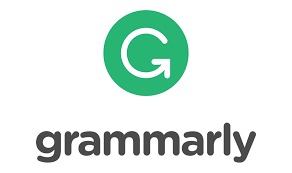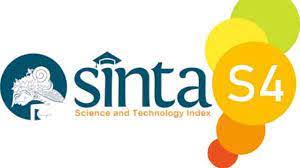Analisis Faktor-faktor yang Mempengaruhi Penerimaan Teknologi Blockchain dalam Industri Akuntansi
Abstract
Penelitian ini bertujuan untuk menganalisis faktor-faktor yang mempengaruhi penerimaan teknologi blockchain dalam industri akuntansi. Melalui analisis faktor dan regresi linear, faktor-faktor seperti persepsi manfaat, kompleksitas, keamanan, ketidakpastian regulasi, dan faktor lainnya dieksplorasi untuk mengetahui pengaruhnya terhadap adopsi teknologi blockchain. Data diperoleh dari responden di industri akuntansi dan dianalisis menggunakan metode statistik. Hasil penelitian menunjukkan bahwa persepsi manfaat, kompleksitas, dan keamanan memiliki pengaruh yang signifikan terhadap penerimaan teknologi blockchain dalam industri akuntansi. Hipotesis H0 ditolak, sementara hipotesis alternatif diterima. Penelitian ini memberikan wawasan bagi perusahaan akuntansi dalam mengembangkan strategi penggunaan teknologi blockchain.
References
Abad-Segura, E., Infante-Moro, A., González-Zamar, M.-D., & López-Meneses, E. (2021). Blockchain Technology for Secure Accounting Management: Research Trends Analysis. Mathematics, 9(14), 1631. https://doi.org/10.3390/math9141631
Baev, A. A., Levina, V. S., Reut, A. V., Svidler, A. A., Kharitonov, I. A., & Grigor’ev, V. V. (2020). Blockchain Technology in Accounting and Auditing. Accounting. Analysis. Auditing, 7(1), 69–79. https://doi.org/10.26794/2408-9303-2020-7-1-69-79
Chishti, S., & Barberis, J. (2016). The Fintech Book (1st ed.).
Dalimunthe, A. F., & Nasution, J. (2022). Accountant, Industrial Revolution 4.0, PT. Eriadi Fatkhur Rokhman, Technology. Al-Kharaj : Jurnal Ekonomi, Keuangan & Bisnis Syariah, 5(1), 284–293. https://doi.org/10.47467/alkharaj.v5i1.1192
Davis, F. (1986). A Technology Acceptance Model for Empirically Testing New End-user Information Systems: Theory and Result. In Doctoral dissertation Sloan School of Management MIT
Davis, F. D. (1989). Perceived Usefulness, Perceived Ease of Use, and User Acceptance of Information Technology. MIS Quarterly, 13(3), 319. https://doi.org/10.2307/249008
Kitsantas, T., & Chytis, E. (2022). Blockchain Technology as an Ecosystem: Trends and Perspectives in Accounting and Management. Journal of Theoretical and Applied Electronic Commerce Research, 17(3), 1143–1161. https://doi.org/10.3390/jtaer17030058
Lansiti, M., & R. Lakhani, K. (2017, January). The Truth About Blockchain. Harvard Business Review, 118–127. https://hbr.org/2017/01/the-truth-about-blockchain
Liu, M., Wu, K., & Xu, J. J. (2019). How Will Blockchain Technology Impact Auditing and Accounting: Permissionless versus Permissioned Blockchain. Current Issues in Auditing, 13(2), A19–A29. https://doi.org/10.2308/ciia-52540
Miller, D., Mockel, P., Myers, G., Niforos, M., Ramachandran, V., Rehermann, T., & Salmon, J. (2019). Blockchain Opportunities for Private Enterprises in Emerging Markets (M. Benjamin, A. Bishop, & O. Daibo, Eds.; Second and Expanded). World Bank.
Murray, M. C. (2019). Tutorial: A Descriptive Introduction to the Blockchain. Commu-nications of the Association for Information Systems, 45(1), 464–487. https://doi.org/10.17705/1CAIS.04525
Nakamoto, S. (2008). Bitcoin: A Peer-to-Peer Electronic Cash System. https://nakamotoinstitute.org/bitcoin/
Nuraliati, A., & Azwari, P. C. (2019). AKUNTANSI UNTUK CRYPTOCURRENCY. I-Finance: A Research Journal on Islamic Finance, 4(2). https://doi.org/10.19109/ifinance.v4i2.2885
Rahimov, N., & Dilmurod, K. (2022). THE APPLICATION OF MULTIPLE LINEAR REGRESSION ALGORITHM AND PYTHON FOR CROP YIELD PREDICTION IN AGRICULTURE. Harvard Educational and Scientific Review, 2(1), Article 1. https://www.journals.company/index.php/hesr/article/view/97
Rogers, E. M. (2003). Diffusion of Innovations, 5th Edition. Simon and Schuster.
Ruslan, Z. (2022). Blockchain Letter of Credit: Apakah Sekarang Saatnya? Fair Value: Jurnal Ilmiah Akuntansi Dan Keuangan, 5(1), 493–508. https://doi.org/10.32670/fairvalue.v5i1.2189
Sargent, T. J., & Stachurski, J. (n.d.). Linear Regression in Python.
Wisudaningsi, B. A., Arofah, I., & Belang, K. A. (2019). PENGARUH KUALITAS PELAYANAN DAN KUALITAS PRODUK TERHADAP KEPUASAN KONSUMEN DENGAN MENGGUNAKAN METODE ANALISIS REGRESI LINEAR BERGANDA. STATMAT : JURNAL STATISTIKA DAN MATEMATIKA, 1(1). https://doi.org/10.32493/sm.v1i1.2377
Copyright (c) 2023 INFORMASI (Jurnal Informatika dan Sistem Informasi)

This work is licensed under a Creative Commons Attribution 4.0 International License.
Tanggung jawab Penulis
- Penulis menyajikan artikel penelitian atau hasil pemikiran secara jelas, jujur, dan tanpa plagiarisme.
- Penulis harus menunjukkan rujukan dari pendapat dan karya orang lain yang dikutip.
- Penulis bertanggungjawab atas konfirmasi yang diajukan atas artikel yang telah ditulis.
- Penulis harus menulis artikel secara etis, jujur, dan bertanggungjawab, sesuai dengan peraturan penulisan ilmiah yang berlaku.
- Penulis tidak keberatan jika artikel mengalami penyuntingan tanpa mengubah substansi












